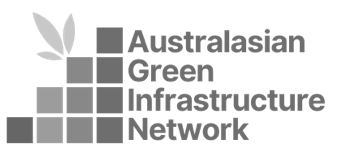When Webnet mesh is used for barriers, a primary structure will be required for support. The supporting structure needs to be robust enough to withstand the horizontal and vertical loads that assembly of Webnet can create.
One option is to use flexible rope frames. These are easy to install and have a light, discreet appearance. When using these types of frames, a sag allowance of 1.5% of the support length is recommended due to the forces that near-straight cables can exert to the structure.
Another option is solid frames. Jakob Webnet frames are made from 316-grade solid stainless steel and hold the mesh infills in place with lacing cable. Using solid frames as primary structures for Webnet barriers means that sag can be minimised.
The case for solid frames as primary structures for Webnet
The features and benefits of solid frames include:
- Robustness and longevity – with the frames and Webnet both being made from 316-grade anti-corrosion stainless steel, barriers made from these products are very low-maintenance and very durable.
- Easy to install – Solid frames can be assembled offsite prior to the final installation on the structure. This helps to make the installation of the Webnet barrier much quicker, easier, and in turn, less disruptive (for example in the case of footbridges over busy highways where traffic needs to be stopped for installation).
- Allows for a modular approach – for example, by sizing Webnet mesh into separate panels before final attachment to the structure, a modular and very manageable method of installation can be undertaken.
- Customisation – both the frames and the Webnet infills can be customised for project requirements, making a very large range of configurations possible.

Customisation options for solid frames
Webnet frame primary structures can be customised in many different ways:
- Frame shape and geometries – the frames come as round or square-shaped hollow tubes. Curved frames are also possible.
- Frame dimensions – frames up to 2m x 3.5m are possible, or even larger in some cases if required. Larger frames can also come with relings attached to increase resistance to forces.
- Webnet shapes and sizes – Webnet can be made from wire rope ranging from 1mm to 3mm in size. It can be formed into a range of aperture-opening geometric shapes and sizes from 20mm to 200mm.
- Appearance – both the frames and infills can be coloured as desired, and the lacing wire holding the mesh can be made either visible or can be hidden from view.
Project examples of solid frames as primary structures for Webnet
Tensile has used solid frames in a variety of projects. These include:
CBD and South East Light Rail Bridge, Sydney
To create the barrier for this busy cyclist and pedestrian bridge, we mounted the Webnet to the frames prior to final attachment on the structure. This made installation quicker and enabled us to do most of our work offsite.
Elizabeth Quay footbridge, Perth
For the barrier on this pedestrian bridge, we sized the mesh into eight panels to match the curves of the structure and to integrate it with the balustrade. This allowed for a modular strategy which made the installation very efficient and enabled the barrier to be completed ahead of the deadline.

Get in touch for more information
Our services include the design, engineering and installation of Webnet mesh barriers and anti-throw screens that are fully compliant with Australian standards and regulations. If you’d like to discuss your project idea, get in touch with our team.






































